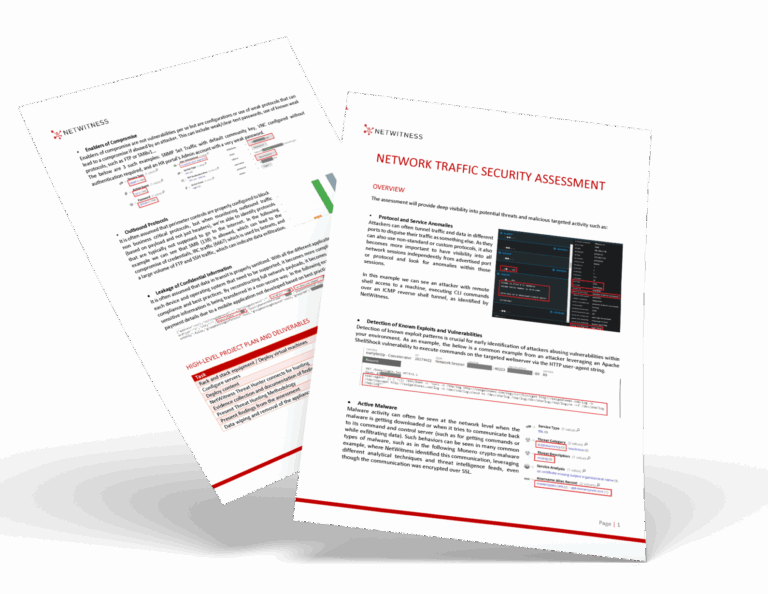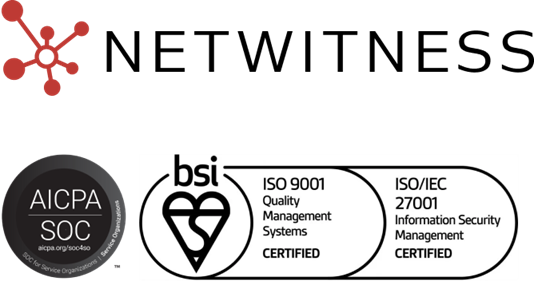Staying Ahead of Hidden Threats in Encrypted Data
Encrypted network traffic has been on the rise for years due to a combination of factors, including the growing focus on data privacy and security, adoption of cloud-based services, and changes in how people work and communicate.
But encrypted network traffic also presents unique challenges for threat hunters. By obscuring visibility, encryption makes it more difficult to detect potential threats and calls for advanced network traffic analysis techniques.
In many ways, encrypted network traffic is like Schrödinger’s cat of information security—we think the data is encrypted, and we hope it’s encrypted. Still, we don’t know for sure unless we examine the underlying network traffic. Security analysts must validate that encryption is functioning correctly to ensure data moves safely and securely.
In this context, proactive threat hunting is about identifying risk as much as detecting attackers. While many associate it with “finding the bad guys,” it’s often about discovering misconfigurations—which are far more common than active intrusions.
By understanding the challenges of encrypted network traffic and implementing proactive hunting strategies, organizations can better protect themselves against misconfigurations and cyberattacks that exploit weaknesses in network traffic.
Brief Explanation of Encryption
Network encryption converts data into code or cipher to secure it while transmitting it over a network. It protects sensitive data from unauthorized access, interception, or eavesdropping within network traffic.
This threat hunting process converts plaintext into ciphertext—an unreadable format—before it’s transmitted. The receiver decrypts it back to plaintext using a decryption key.
With plaintext, it’s easy to detect misconfigurations or breaches, but with encrypted data, visibility decreases. Organizations must adopt a behavior-based approach—making inferences from artifacts within network traffic rather than the content itself.
Checking Facts and Identifying Risks
Checking facts and identifying risks is all about challenging assumptions—analyzing network traffic to ensure it aligns with what’s expected.
If an organization has policies stating “X, Y, and Z are not allowed,” it might be tempting to assume compliance. However, network traffic monitoring often reveals violations or deviations.
By proactively identifying risks, security teams can confirm whether policies are being followed and reduce exposure to misconfigurations or threats hidden in encrypted network traffic.
Strengthen Network Visibility with NetWitness® Network Traffic Security Assessment
-Uncover hidden threats through deep packet inspection and analytics.
-Identify vulnerabilities and blind spots before they’re exploited.
-Enhance detection and response with NDR-driven intelligence.

Tips for Checking Facts and Identifying Risks
- Begin with existing policies: Review current policies and determine the datasets required to validate them, including information from network traffic monitoring platforms.
- Start with a hypothesis: Every proactive threat hunt begins with a theory. Narrow your focus on what you’re looking for, then use network traffic analysis tools to test your hypothesis and identify anomalies.
- Use protocol mismatches to inspect data passing through the network: A protocol mismatch happens when network traffic uses a different protocol than expected. Some mismatches may be harmless misconfigurations, while others can indicate malicious activity.
- Examine client metakeys: The client metakey reveals which application initiated the network traffic (via the user-agent field). Even when encrypted, protocol mismatches or redirects can leak useful context for investigators.
- Look at the cipher key: The cipher key indicates the encryption algorithm in use. Outdated or weak algorithms pose potential risks to encrypted network traffic and should be reviewed regularly.
- Consider the version key: The version key identifies the cryptographic protocol version (e.g., TLS 1.0). Attackers can exploit older protocols, making it vital to monitor for outdated or unauthorized versions.
Supporting Compliance and Audits
As compliance regulations and cyber insurance audits grow more rigorous, organizations must demonstrate how data in network traffic is protected.
This involves assessing encryption strength, protocol versions, and algorithms (ciphers) used in data transmission.
Many organizations ask, “How do we translate this network traffic data into business terms?”
Tips for Supporting Audits
1. Choose a tool with reporting capabilities:
Select a network traffic monitoring platform that translates technical findings into business-ready reports for executives.
2. Translate network traffic data for actionable results:
Break down network traffic insights to show compliance status and help decision-makers shape better security policies.
By connecting technical monitoring with business needs, organizations ensure both compliance and informed governance.
Jittery Robots and C2 Traffic
Command and control (C2) traffic occurs when attackers communicate with compromised systems using network traffic as the medium.
Once a malicious payload executes, it begins “beaconing” back to the command server. Traditionally, such patterns—like beacons every 30 seconds—were easy to identify in plaintext network traffic.
But with encrypted network traffic, attackers have adapted. They now use jitter, introducing randomness in beacon timing or payload size to hide activity.
This makes detection based on predictable patterns ineffective. Modern proactive cloud threat hunting uses baselines and extended observation windows to spot these subtle patterns. Over hours or days, even jittered beacons reveal traces of regularity.
Detecting behavior in encrypted network traffic is often just the first step—an entry point for deeper investigation. Integrating advanced analytics strengthens detection accuracy.
Tips for investigating C2 Network Traffic
- Maintain situational awareness and visibility – Identify blind spots within network traffic and understand how data flows across systems.
- Choose a flexible tool – Ensure your network traffic analysis tool can organize and correlate data according to your team’s workflow.
JA3 and JA3S
JA3 and JA3S are open-source techniques for fingerprinting client and server applications in TLS network traffic.
- JA3 fingerprints the client “hello” message during SSL/TLS handshakes.
- JA3S fingerprints the server’s response.
Together, they form unique hashes for encrypted sessions, allowing analysts to track suspicious connections even when payloads are hidden.
Tips for leveraging JA3 and JA3S
1. Provide hash values as indicators of compromise (IoCs):
Like any other IoC, you can feed JA3 and JA3S hashes into a tool of your choice, tag them, and alert on them. If you leverage JA3/s from a proactive threat hunting intel perspective, make sure you monitor network traffic, maintain, and prune them, just like any other IoC artifact. A SOAR and TIP platform is very useful for the automated curation of IoC artifacts.
2. Baseline JA3 and JA3S:
Set a time window and capture the unique pairs of JA3 and JA3S from network traffic to gather critical servers and alert on new anomalies. JA3S values don’t change as often as JA3 values, so if you combine the hashes, monitor critical servers, and baseline them; anomaly detection will be more high-fidelity.
3. Leverage a user entity and behavior analytics (UEBA) tool:
A UEBA tool can allow organizations to conduct a baseline over a more extended period for more devices by monitoring network traffic. Ultimately, UEBA is all about anomaly detection. An effective UEBA will continue to learn and alert on outliers in the dataset.
How NetWitness can Help
A network detection and response (NDR) platform like NetWitness provides comprehensive visibility for proactive threat hunting in encrypted network traffic.
With NetWitness, organizations can:
- Decrypt and analyze encrypted traffic to reveal hidden threats.
- Detect anomalies in real time using advanced network traffic analysis and machine learning.
- Visualize and report findings through dashboards, alerts, and compliance-ready reports.
- Respond faster using automation and guided workflows.
By combining network monitoring with intelligent analytics, NetWitness helps organizations shift from reactive detection to proactive defense.
Conclusion
Encryption is essential for privacy—but it also conceals risk. Without visibility into encrypted network traffic, threats can hide in plain sight.
Through proactive threat hunting, network traffic monitoring, and tools like NetWitness NDR, organizations can uncover hidden activity, validate encryption, and ensure that encrypted traffic doesn’t become a blind spot for attackers.





